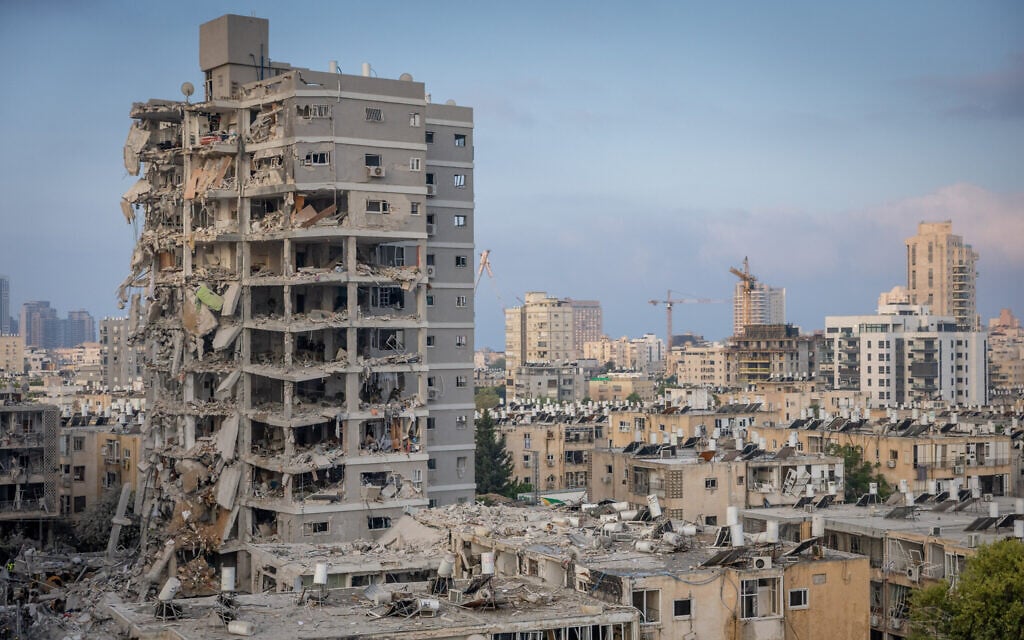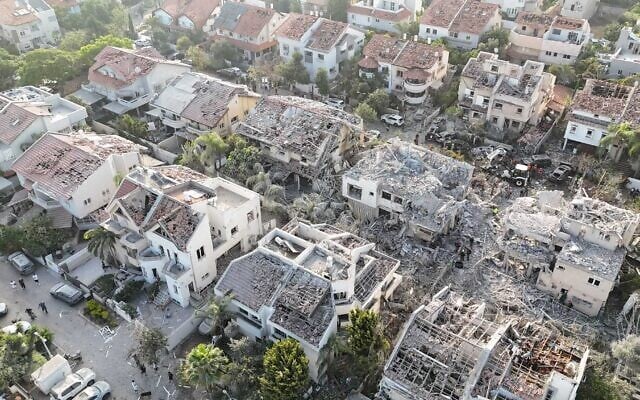by Emanuel Fabian
IDF says rate of interception similar to 2024 attacks, denies Tehran has maneuverable missiles; missiles carry 1,100-lb warheads; US assisting with defense
 |
The scene of an apartment building destroyed by an
Iranian ballistic missile impact, in Bat Yam, June 15, 2025. (Chaim
Goldberg/Flash90) |
Iran has fired some 280 ballistic missiles at Israel in several barrages since the Israel Defense Forces began its operation against the Islamic Republic’s nuclear program early Friday morning, according to updated statistics provided by the military on Sunday.
Most of the missiles were intercepted by air defenses at interception rates similar to those in Iran’s April and October 2024 attacks on Israel, the IDF said.
The military said that dozens of missiles were not intercepted “according to protocol,” allowing them to strike open areas without causing damage to any critical infrastructure. This is to conserve interceptors for missiles that are expected to cause harm.

A military official told The Times of Israel on Sunday that Iran’s missiles are “not something we don’t know how to intercept,” but some impacts were still expected.
The military has also said that all of its bases, including air bases, were operating as usual with no harm to their functionality.
The IDF said Sunday that so far, Iran’s attacks were below the “reference scenario,” or what the IDF had anticipated in a war with Iran. The military had estimated far larger numbers of casualties and more significant damage.
Iran is still believed to possess thousands of ballistic missiles.
Dozens of drones launched from Iran have also been shot down by the Israeli Air Force and Navy since Friday, nearly all of them before reaching the country’s borders, the IDF has said.
International help
American air defense systems and a US Navy destroyer helped Israel shoot down incoming ballistic missiles on Friday, US officials said.
The US has THAAD (Terminal High Altitude Air Defense) systems deployed in Israel, which are capable of intercepting ballistic missiles. A US Navy destroyer in the eastern Mediterranean Sea also shot down Iranian missiles heading toward Israel, one official said.

However, aside from the US, Israel’s allies in the region are not capable of shooting down ballistic missiles, which have a short flight time of around 10 minutes and are challenging to intercept, requiring advanced air defense systems like Israel’s Arrow or the US’s THAAD.
Jordan’s state media said Friday that it intercepted a number of drones that entered the country’s airspace.
Drones launched from Iran have a flight time of multiple hours to reach Israel, and need to first cross countries such as Iraq, Syria, Jordan, or Saudi Arabia, where they can be shot down either by Israel or its allies.
Emanuel Fabian
Source: https://www.timesofisrael.com/devastation-grows-as-iran-targets-civilian-areas-despite-interceptors-and-shelters/
No comments:
Post a Comment